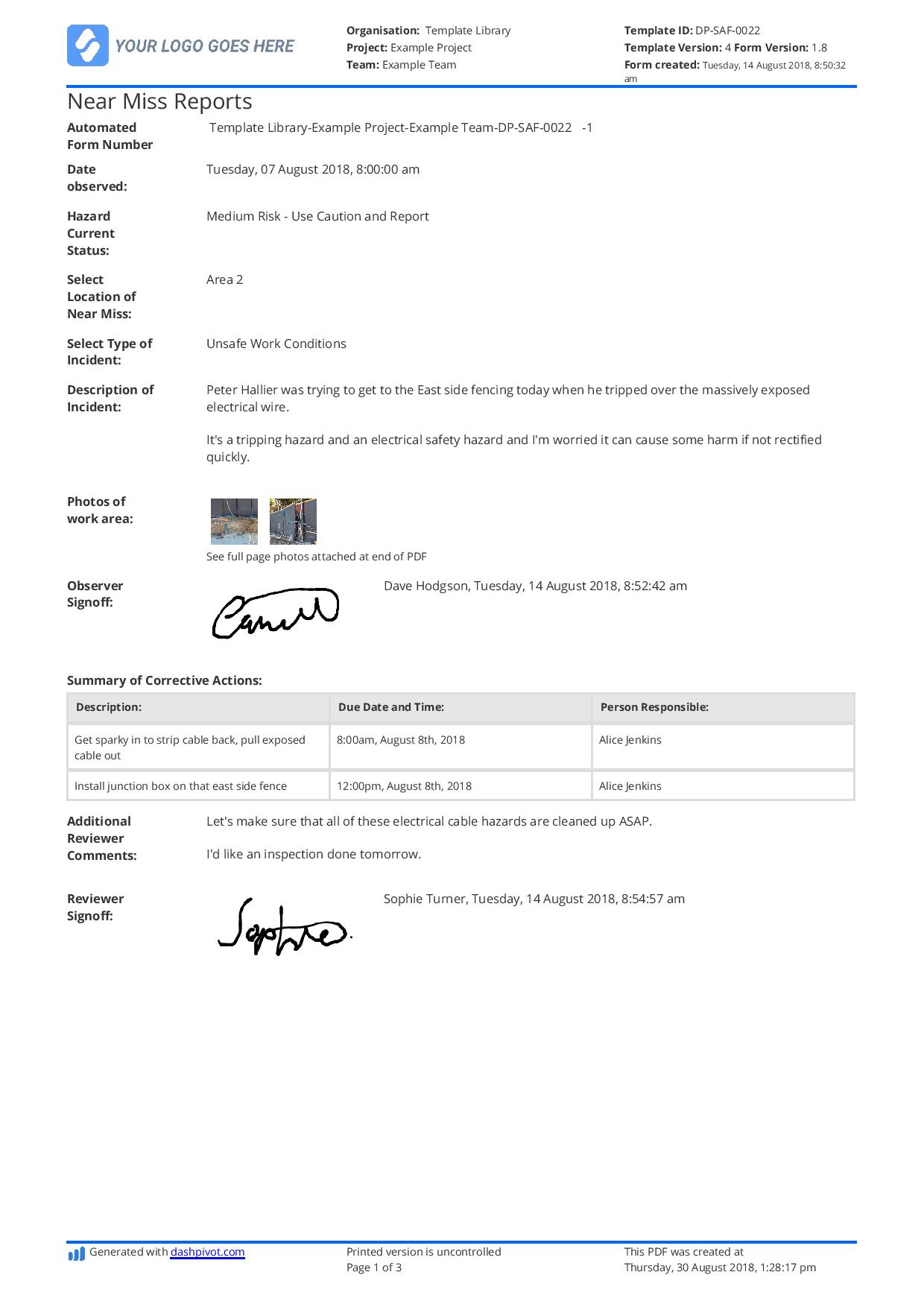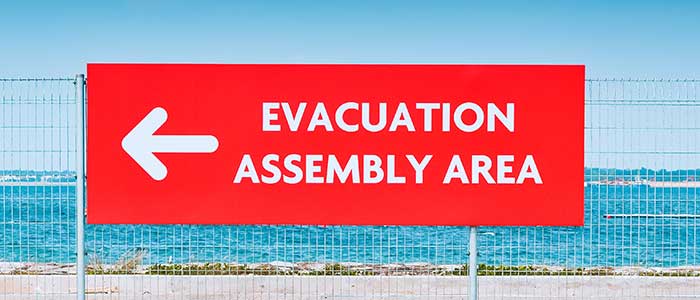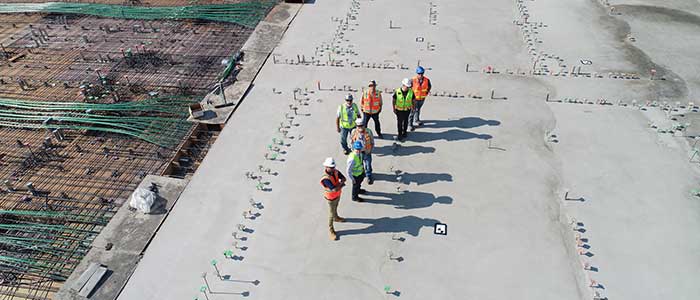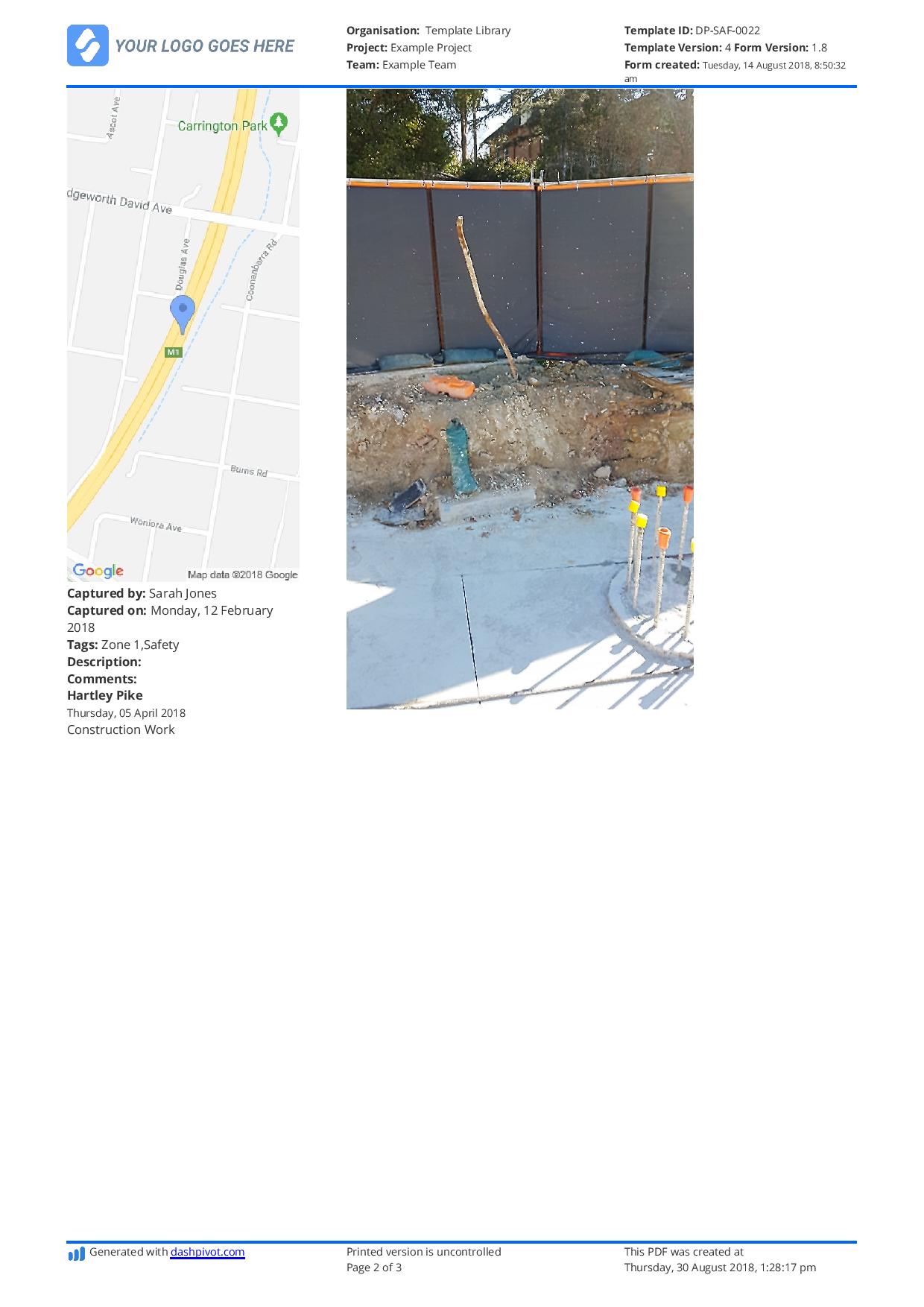Dashpivot article page – Why is it important to report a near miss

Why is it important to report a near miss?
Why is Reporting Near Misses Important for a Safe Workplace?
Oftentimes, organisations, businesses, offices, and workplaces overlook reporting near misses because no actual accident occurred or no damage and harm was done on the workers and properties. You may find someone who hasn't experienced a serious incident asking "why is it important to report a near miss?" - but you won't find someone who has experienced them asking that question.
Even if no one was harmed, it’s still crucial to create a report and detail everything that had happened. Near miss reports give valuable insights to the possible hazards in the workplace. Organisations and persons responsible are also able to mitigate the hazards before someone actually gets hurt.
Before hazards lead to serious incidents, the worst case is death, reporting near misses helps organisations address them. In simpler terms, a near miss is a warning that should be taken seriously and addressed accordingly. Having a collection of near miss reports of similar instances allows safety officers to understand and analyse patterns and perform corrective measures to avoid them from happening again or worse, hurting somebody.
Near misses provide insights into potential hazards and unsafe practices in the workplace. They reveal the weak safety points that may not be apparent. It shows the gaps in protocols, equipment defects, and other hazards and risks.
Reporting near misses reduces the possibility of serious incidents in the workplace, which is highly beneficial for all involved. Employees shouldn’t be scared of reporting them and organisations should create a culture of safety that encourages reporting near misses.
What are the Potential Consequences of Ignoring Near Misses?
Firstly, ignoring near misses increases the likelihood an accident would occur which harms the workers on site. If they are left unreported, workers and organisations won’t be able to mitigate the hazards and risks before an actual accident occurs.
It’ll be much harder to perform corrective actions that may possibly be too late already. This would expose the workers on site to accidents and dangers. If left un-investigated, organisations cannot correct the weak practices and unsafe conditions in the workplace.
Secondly, ignoring near misses just means that the organisation does not prioritise the safety of the workers on site. Not promoting a safety culture in the workplace discourages employees to be watchful and proactive with reporting near misses, or even identifying possible near misses before they happen. Employees would feel unheard and undervalued.
Lastly, by ignoring near misses, if an actual accident occurs that harms people and properties, there will be financial liabilities. It’s just advisable to perform preventive measures and report near misses to avoid additional and unnecessary costs.
Ultimately, ignoring misses possibly causes serious incidents, harms employees, damages properties, and compromises employee safety and organisation reputation.
Does a Near Miss Have to be Reported or is it Just Important?
The obvious answer is yes. A near miss always has to be reported, even though no actual harm, injury, or damage had been incurred. A near miss indicates a weakness in an organisation’s safety protocols, which may lead into actual accidents that cause harm, injury, or damage to employees, materials, and properties. Even a potential should still be reported and made known to the organisation.
Reporting near misses allows proper documentation for potential hazards in the workplace and the implementation of proactive measures from the safety officers or management. Having a proper near miss report can help organisations analyse the root causes of these events, and determine high-risk areas from data and patterns. Complacency and failing to report compromises everyone’s safety so organisations should make it clear that a culture of safety is highly prioritised so employees will proactively report on near misses and similarly, persons in-charge will promptly address and mitigate the hazards.
Employees should be given the opportunity to address harm that comes to everyone in the workplace, especially if it’s a high-risk or hazardous area. That's why a near miss report is an essential tool for risk management.
Organisations should ensure that for every workplace, location, and site, reporting near misses is mandated and practiced.
What are the Benefits of Near Miss Reporting?
Near miss reporting can help organisations improve the safety protocols, promote a proactive safety work culture, and reduce costs or financial compensations from accidents and damages.
By tracking and analysing the data collected from multiple near miss reports from employees, organisations and businesses can recognise the high-risk areas and update the safety protocols, or improve employee and workplace safety training.
Practicing near miss reporting can prevent costly accidents meaning less costs on medical treatment and compensation for the injured employees including less costs for repair or replacement of faulty equipment. Additionally, it also reduces the lost work hours from employee injuries, repairs, and investigations.
Below is an example of a near miss report, and you can find more near miss report examples for construction here.

Use this Near Miss Reporting framework for free
What is Important After a Near Miss is Reported?
Even though the question we have asked and answer here has centred on why it's important to report a near miss, it's equally important to follow up and action the near miss to prevent it becoming something worse.
When an employee submits a near miss report, organisations must take action and use the reports to improve the safety in the workplace, reduce hazards and risks, and act accordingly to promote a healthy workplace. Organisations must investigate and learn from the incidents by creating a structured process to investigate and address the near miss.
For starters, the organisation must have a proper document for employees to use in making a near miss report. It should be ensured that the reporters fill out the complete details and that the reviewers are able to comprehend the document. It’s advisable to use digital forms and tools to make information accessible.
Next, reviewers should conduct an investigation which could be in the form of interviews, equipment inspection, reviewing safety procedures, and more. They should dig the root causes of the near misses. Corrective actions should directly address the root causes and immediate risks.
Next, it’s important to review the safety procedures and protocols on site. Should there be a need to update the contents based on the analyses of the near misses, the organisation should immediately reflect the new preventive measures to avoid accidents. Procedures and protocols should stay updated and relevant. Another thing to take note of is to share lessons to all employees. Organise training, seminars, and safety meetings to spread awareness and discuss the preventive measures and updated procedures/policies to promote a safe workplace.
Using the data collected from multiple near miss reports, the organisation should be able to track patterns and analyse trends. This can help identify the high-risk areas to avoid recurring incidents.
Lastly, provide recognition to employees who report near misses to encourage everyone to report near misses in the future. Promote a no-blame policy when reporting near misses.
How Do Digital Tools Improve the Quality and Consistency of Your Near Miss Reports?
Digitised tools significantly impact the data collection and accessible data for reporters and investigators to analyse near miss reports, and in fact, many systems have dedicated modules for near misses or entire near miss reporting apps/workflows. They improve the quality of near miss reports through real-time data collection and reporting using digitised forms. With Dashpivot, workers on site use their mobile phones and tablets for data entry, and easily upload the near miss reports in real time and reduce the inaccuracies and errors. Workers don’t have to recall events when they get back to the office since they can input data in real time.Get all of your workforce in the same system for efficient communication between workers on site and employees in the office, and same database for a centralised collection of near miss reports.
Dashpivot offers powerful form fields capturing information quicker and easier. Create your near miss reports with a simple drag-and-drop form builder, or choose from Dashpivot’s free template library to get started. Digitised forms improve the consistency of near miss reports by ensuring information collected is in a standardised arrangement. If there is a standardized form, every report follows a uniform structure. With Dashpivot, you can create your customised near miss reports to make sure information is reliable and dependable. Use the same near miss report format across all reports, making it easier for everyone to comprehend the contents.
You can add tables, with the ability to add dropdowns, photo fields, photos, prefilled texts, and many more. Photos can contain notes, mark-ups, and geo-location. To make sure that workers won’t miss filling out any field, Dashpivot has the feature to make any field a required field. If necessary, you can add formulas and conditional logic fields. Finish off your near miss report with an e-signature field, and once that’s saved in the database, anyone with access can see the report.
You can layer permissions on top of folders in your database and only grant access to whoever is working in that site or project. You can easily control reports with Dashpivot’s flexible folder structure. Not only are you and your team able to efficiently report on near misses, but you’re also making sure these documents are highly secured and safe only for certain individuals to access. This helps your organisation control whoever has access, and most importantly prevents employees from accidentally editing or deleting your documents.
How Can Organisations Measure the Success of a Near Miss Reporting Process?
Creating a tight feedback loop on your near miss reporting process proves why it is important to report a near miss.
There are key ways where organisations can measure whether their near miss reporting process or procedure is effective in mitigating risks in the workplace.
First would be the rates of the reporting. Meaning that if the quantity of quality near miss reports have increased overtime, that means that the employees are engaging in safety management and proactively taking measures in workplace safety. This also means that the organisation has successfully employed a culture of safety mindset, where employees are encouraged to report and that they trust the resolution measures implemented by the organisation.
Similarly, there should also be rates of incidents. If there is a reduction in the number of near miss incidents in the workplace, that means the near miss reports and the reporting process are effective tools in mitigating risks.
One measure is to track how many of these reports have been resolved. They should be tagged in different categories like maybe ‘Improvement is Safety Protocols’, ‘Safety Training', ‘Replaced/Upgraded Equipment’, or anything similar. The organisation should know how to use data and analytics to understand patterns and identify trends from data collected from near miss reports. By being able to understand these, it’ll must easier for decision-making bodies to implement safety measures and solutions.
Another measure is also timeliness of reporting or how quickly employees report a near miss after it happens. This is a key indicator that employees are responsive. This also indicates that the entire reporting process set by the organisation is accessible, easy to use, and trustworthy.
If the set of reports come from different departments and locations, this shows that the process has been made known to the entire organisation and a wide number of employees are fully aware of the reporting procedure or process.
Near miss reporting involves employee safety, so a measure to ensure that the employees’ needs are met is the employee feedback. It’s important to always conduct a survey to know if the near miss reporting and procedure is accessible to employees, effective in mitigating workplace risks, and if there should be any improvements. A positive feedback shows that the employees trust the system, with maybe room for improvements, but a negative feedback would show that the process is not trustworthy, and the organisation needs to improve their safety protocols and company policies.
When the organisation conducts safety training and the employees are proactively participating in reporting and openly discussing safety issues, that means the near miss reporting is a success. Not only is the entire organisation focusing on near misses but also in the overall safety of the company.
The engagement of the supervisors, safety officers, and management should also be tracked, like if they are actively reviewing the reports, promoting safety in the workplace, reinforcing the importance of following the proper near miss reporting procedure, and getting involved in the preventive measures or resolutions.
Lastly, another measure is to check whether the organisation regularly updates the company policies, safety practices and procedures, or even the training regarding near miss, near miss reporting, and even the overall safety of the workplace. This shows that the company strives to improve in their safety measure continuously, most especially in the employees on site.

Hazard Report template
Document and report hazards quickly and thoroughly to keep everyone safe.

Safety Improvement Plan template
Create coherent, actionable and professional safety plans using this proven framework.

Safety Toolbox Talk template
This toolbox talk template is quick and easy to complete and signoff on site, and keeps all of your toolbox talks neatly organised and professional.

